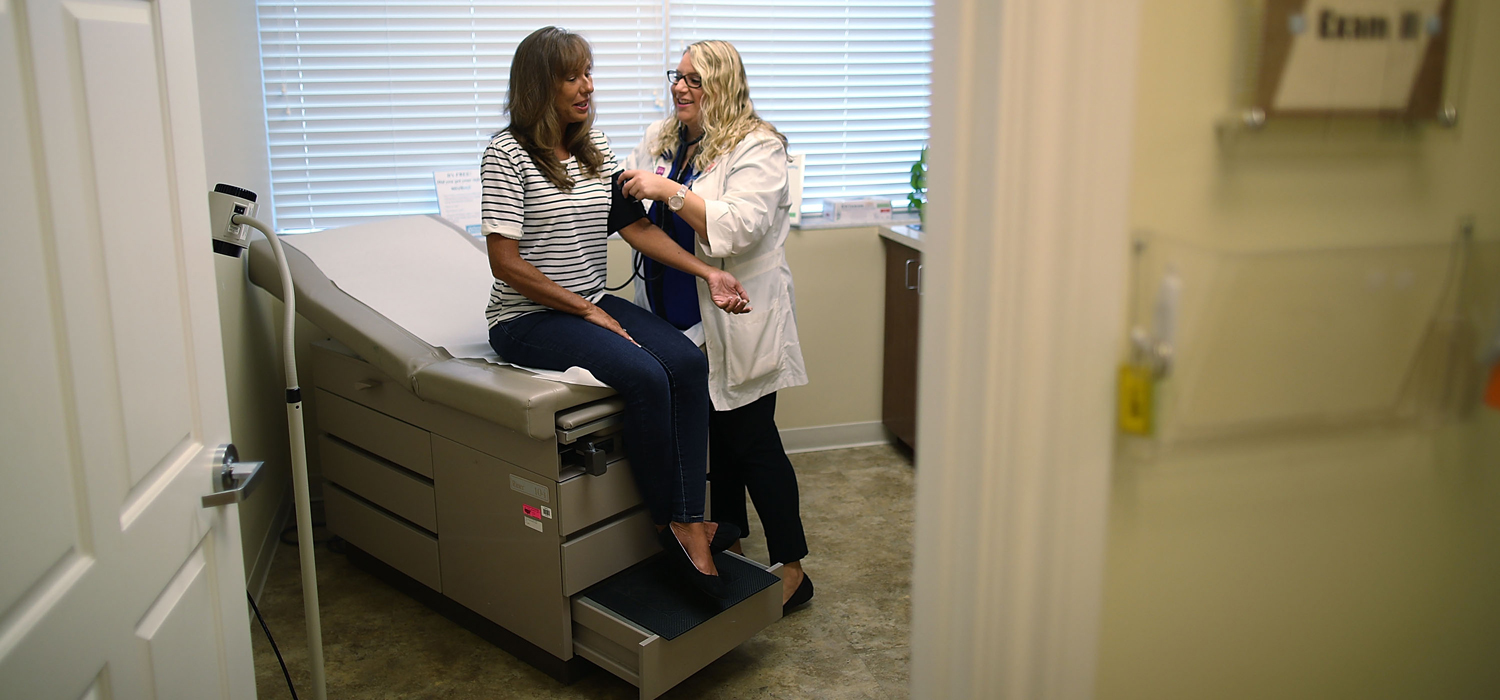
<p>Ginger Rae has her blood pressure checked by registered nurse practitioner Rachel Eisenberg during a checkup at a Planned Parenthood health center on July 13, 2017 in Wellington, Florida. Photo by Joe Raedle/Getty Images.</p>
On May 22, the department of Health and Human Services released proposed regulations, supported by the White House, that would place new restrictions on the use of Title X family planning program funding. Title X provides $286 million a year to safety net family planning clinics like Planned Parenthood and state public health departments to provide birth control services, pregnancy tests, screenings, and general medical care.
Federal funds currently cannot be used to pay for abortion except in cases of rape, incest, or endangerment of a woman's life. The proposed rule would withhold all federal funds from family planning clinics and providers that perform or refer patients to abortion services.
Urban Institute's 2018 Survey of Family Planning and Women’s Lives provides a picture of women’s experiences with family planning safety net clinics like Planned Parenthood. (The findings and methodology of the survey will be published soon, but the 2016 survey used the same methods.) The survey shows that nearly one-third of US women of reproductive age have used a safety net family planning clinic at some point for various services.
Overall, 31.6 percent of women of reproductive age, or about 18.6 million women, say they’ve ever used a safety net family planning clinic.
Nearly one-third of these roughly 18.6 million women who had visited a clinic did so in the past three years (5.6 million women) and 13.8 percent have used a safety net family planning clinic in the past year (2.6 million women), but for most clinic users in our survey, it had been more than three years since their last visit.
Low-income women were significantly more likely to have visited a clinic in the past year than high-income women (7.9 percent of women with family income at or below 138 percent of the federal poverty level versus 2.5 percent of women with family income at or above 400 percent of the federal poverty level; data not shown). Insured and uninsured women had similar rates of safety net family planning clinic visits in the past year (4.1 percent and 5.8 percent, respectively; data not shown).

When considering lifetime use of safety net family planning clinics, our analysis finds that Hispanic women were more likely to have used a safety net clinic than their peers, while women at different income levels were about equally likely to have used a clinic in their lifetime. Women who attended religious services weekly were less likely to report using a safety net family planning clinic than other women, but more than one in five women who regularly attended religious services had used a safety net family planning clinic in their lifetime.

Safety net family planning clinics serve many basic medical care needs.
Almost 70 percent of women reported receiving birth control or other reproductive health care at these clinics. But women do not visit these clinics only for family planning services. Thirty-six percent of women reported using these clinics for general medical care and 43 percent said they used them to obtain screenings for sexually transmitted diseases. Of the six services that were assessed in the survey, abortion was the least-common service reported —14.3 percent of women who used a clinic reported receiving an abortion. (Rates of abortion might be biased because of underreporting in surveys.)

Women say they use safety net family planning clinics to access free or low-cost medical care that is confidential and respectful.
The availability of free or low-cost services was an important reason why women choose these clinics; 57.6 percent of women mentioned this a reason. Women also reported choosing these clinics for the confidentiality of the care provided (42.0 percent) and because they are treated with respect (30.0 percent). Importantly, 20.5 percent or women using a safety net family planning clinic went there because it was the only place they could get desired services, and 18.1 percent cited it as their usual source of health care.

Our analysis shows that nearly one-third of US women of reproductive age have used safety net family planning clinics at some point , sometimes for general medical care. These clinics have affected the lives of millions of women across demographic and socioeconomic groups.
These findings highlight the important role family planning clinics serve in the health care safety net. They also suggest that insured and uninsured women alike use safety net clinics and that even high-income women have used safety net family planning clinics at some point, which indicates the importance of these clinics in providing access to care throughout a woman’s reproductive years.
These findings indicate that women value the care provided at safety net family planning clinics because it is free or low cost, confidential, accurate, and respectful, sometimes serving as women’s usual source of care or the only option in their community.
Federal action to take Title X funds away from Planned Parenthood and other safety net family planning clinics that refer women to abortion could reduce the availability of free and low-cost services at these clinics across the country. A recent example of similar state action, the exclusion of Planned Parenthood affiliates from state funding in Texas, was found to decrease women's access to contraception.
This new rule could affect millions of US women and create a barrier to affordable, confidential, and respectful health care services.
Let’s build a future where everyone, everywhere has the opportunity and power to thrive
Urban is more determined than ever to partner with changemakers to unlock opportunities that give people across the country a fair shot at reaching their fullest potential. Invest in Urban to power this type of work.